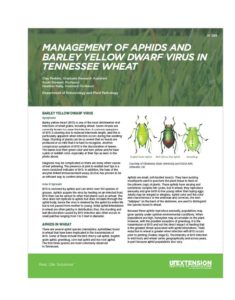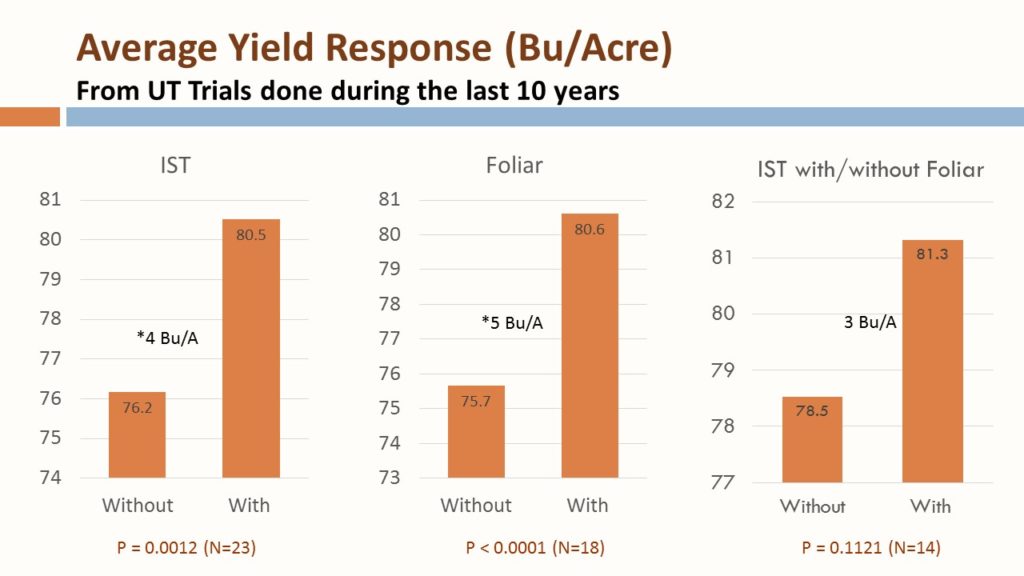 A new publication (W 389), Management of Aphids and Barley Yellow Dwarf Virus in Tennessee Wheat, is now available on line. This publication will provide some timely information for managing aphids during the next 30-45 days, where UT data suggest a late winter insecticide application can reduce the incidence of BYD and increase yields. Typically, pyrethroid insecticides are recommended.
A new publication (W 389), Management of Aphids and Barley Yellow Dwarf Virus in Tennessee Wheat, is now available on line. This publication will provide some timely information for managing aphids during the next 30-45 days, where UT data suggest a late winter insecticide application can reduce the incidence of BYD and increase yields. Typically, pyrethroid insecticides are recommended.
The graph below show a summary of yield responses to an insecticide seed treatment (IST), a foliar insecticide application made in late winter (Foliar), and a combination of an IST and a late winter foliar insecticide application. The take home message is that, if an insecticide seed treatment is not used, we have seen a consistent yield response to treating for aphids during late winter. Our applications were typically made in February, but I would expect similar results from those made this month. The “N” number on the bottom of the graphs indicates the number of tests included in each comparison, and both an insecticide seed treatment or a late winter foliar insecticide application significantly improved yield by an average of 4-5 bushels/acre.


